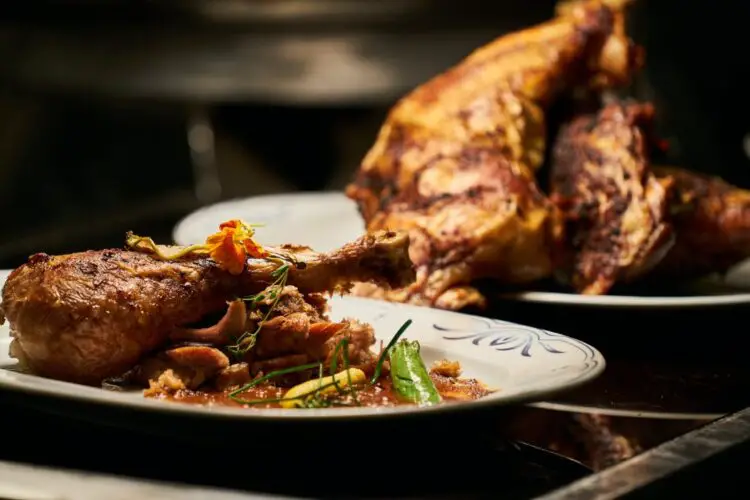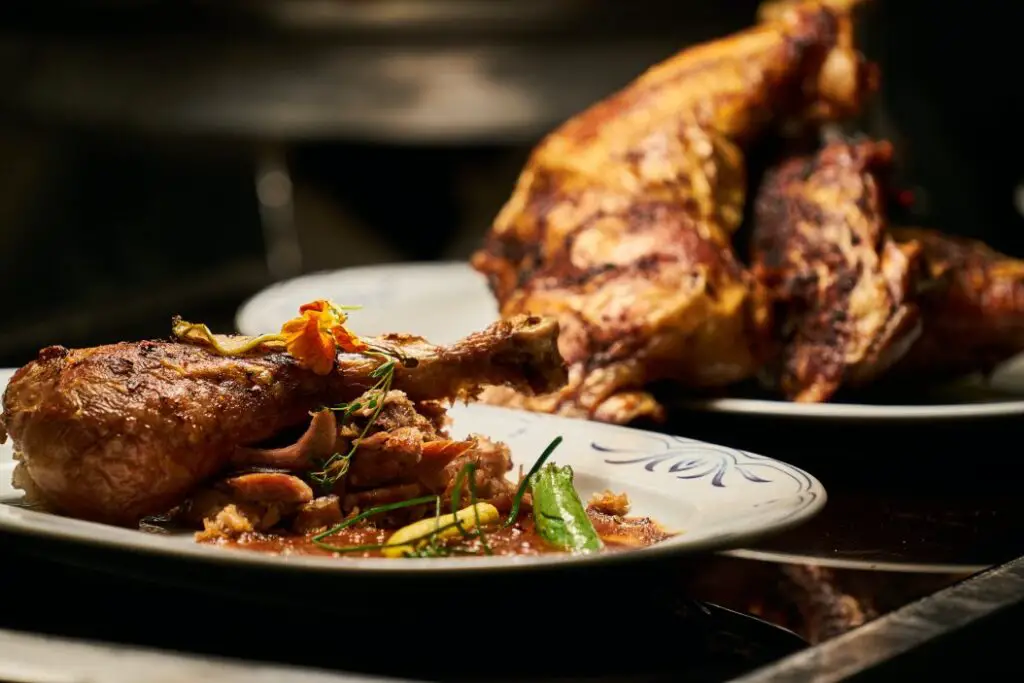
The magic of chicken – chicken is a remarkably versatile ingredient that is beloved worldwide for its mild flavor and meaty texture. For home cooks, chicken can feel like a safe default option, but with the right techniques and flavor combinations, it can be transformed into so much more. This protein has an almost magical ability to absorb and complement other ingredients, making it perfect for all types of global cuisines. From quick weeknight meals to impressive dishes for entertaining, chicken consistently delivers.
In this article, we will explore the secrets of preparing chicken in ways that unlock its full potential. We will journey from basic pan-fried cutlets to complex multi-ethnic stews, learning when to keep the flavors simple and when to make them sing. You will gain confidence working with this lean, budget-friendly protein and expand your repertoire of chicken dishes dramatically. With the proper handling, seasoning, and cooking methods, anyone can unleash the magic of chicken at their own dinner table. From mild to savory and crispy to succulent, we will cover all the techniques needed to master this versatile ingredient.
Here are the key takeaways from this guide on cooking chicken:
- Choose the right cooking method for the desired texture and flavor. Roasting and grilling work well for bone-in cuts. Pan-frying is great for quick meals with boneless chicken. Slow braising makes tough cuts very tender.
- Always brine or marinate the chicken first to help it retain moisture and get seasoned. Soaking in a saltwater solution is an easy way to brine chicken.
- Be careful not to overcook chicken, especially boneless breasts. Use a meat thermometer to ensure 165°F internal temp.
- Generously season chicken with salt, pepper, and other spices/herbs before cooking. Chicken can easily be bland without enough seasoning.
- Let chicken rest at least 5 minutes after cooking so juices can redistribute before slicing into it.
- Avoid common mistakes like rinsing raw chicken, overcrowding the pan, and using only boneless, skinless cuts.
- Employ proper technique and chicken can be a flavorful, lean protein as part of a healthy diet. With the right prep, you can make juicy, tender chicken every time.
The Versatility of Chicken

Chicken is prized in home kitchens for its ability to transform into varied dishes across cuisines. This mild meat absorbs flavors readily, taking on the taste of sauces, spices, herbs, and other ingredients.
Chicken can be prepared in many ways including frying, barbecuing, grilling, shredding, and stewing, as seen in the global chicken preparation below. Shredded chicken also holds up remarkably well in salads, sandwiches, burritos, and other meals.
| Cuisine | Fried | Barbecued | Grilled | Shredded | Stewed |
|---|---|---|---|---|---|
| Italian | Chicken Parmesan | Chicken Scarpiello | Grilled Chicken Caesar Salad | Shredded Chicken Cacciatore | Chicken Cacciatore |
| Indian | Fried Chicken 65 | Tandoori Chicken | Tandoori Chicken Tikka | Shredded Tandoori Chicken | Chicken Curry |
| Chinese | General Tso’s Chicken | Char Siu Chicken | Grilled Teriyaki Chicken | Shredded Chicken Chow Mein | Red Cooked Chicken |
| Mexican | Crispy Chicken Tacos | Pollo Asado | Grilled Chicken Fajitas | Shredded Chicken Enchiladas | Chicken Tortilla Soup |
| Greek | Crispy Lemon Chicken | Chicken Souvlaki | Grilled Chicken Gyros | Shredded Chicken Moussaka | Chicken Stew |
| French | Chicken Croquettes | Poulet Au Barbecue | Grilled Chicken Provencal | Shredded Chicken Salad | Coq Au Vin |
| Indonesian | Ayam Goreng | Ayam Bakar | Ayam Bakar Taliwang | Shredded Ayam Geprek | Ayam Kecap |
| Japanese | Chicken Karaage | Yakitori Chicken | Yakitori Chicken | Shredded Chicken Teriyaki | Chicken Oyakodon |
| American | Fried Chicken | BBQ Chicken | Grilled Chicken Sandwich | Shredded Chicken BBQ | Chicken Pot Pie |
| African | Fried Chicken and Plantain Rice | Peri Peri Chicken | Kati Kati Chicken | Shredded Chicken with Jollof Rice | West African Chicken Stew |
From basic weeknight dinners to impressive entrees, chicken consistently delivers. Its neutral taste allows the creative home cook to explore flavors from around the world. Italian chicken parmesan, Indian chicken tikka masala, General Tso’s chicken, and fajitas all start with simple chicken as the canvas for deliciousness.
Chicken as a Neutral Canvas
One of the things that makes chicken so versatile in cooking is its mild and neutral flavor profile. Chicken has a subtle taste and texture that allows other ingredients to take center stage. This makes it an ideal blank canvas for absorbing and complementing other flavors.
Spices, herbs, marinades, and sauces all get a chance to shine when paired with chicken. The chicken provides substance while the other ingredients provide the main flavor punch. This allows cooks to explore cuisines from around the world by using chicken as a foundation.
Chicken’s neutral qualities also make it perfect for showcasing high-quality ingredients. Premium olive oils, specialty produce like heirloom tomatoes, truffle oil, and expensive cheeses all get a stage to sing on when served with chicken.
“Chicken is like a blank canvas for cooking because its mild flavor absorbs other ingredients beautifully. You can paint chicken with any flavor profile from fiery Tex-Mex to creamy Tuscan and it works. That neutrality makes it one of the most versatile ingredients for home cooks.”
Chef Jose Andres
In many dishes, chicken is present to provide protein and texture while other ingredients lead. This supporting role is what enables chicken to adapt effortlessly to so many global cuisines and flavor combinations. It is the ultimate team player of meats.
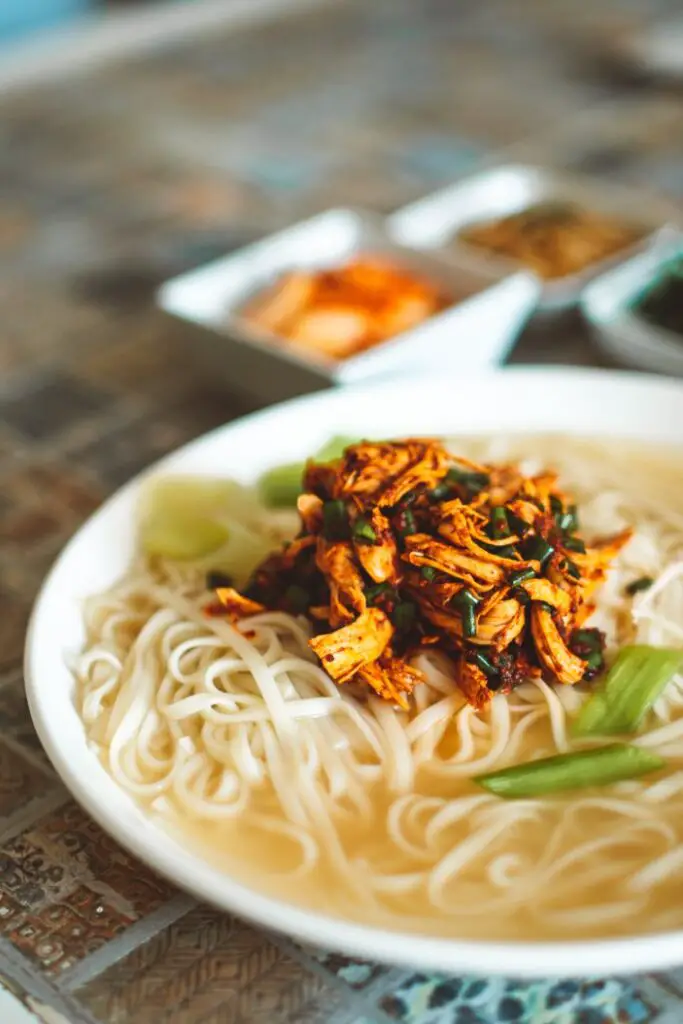
Global Chicken Cuisines
One of the joys of cooking with chicken is exploring the myriad ways it is prepared across diverse cultures and cuisines. From Indian chicken tikka masala to General Tso’s chicken, chicken takes a starring role globally.
- In Italian cuisine, chicken may be breaded and fried into crisp cutlets for classic chicken parmesan, simmered into wine-infused chicken cacciatore, cooked in a lemon-caper sauce for chicken piccata, or prepared Tuscan-style in a creamy Parmesan sauce.
- Indian chicken dishes highlight unique spices like turmeric, cumin, garam masala, and ginger to create intensely flavorful curries, biryanis, and tandoori chicken.
- Chinese chicken preparations often use quick-cook methods like stir-frying, deep frying, or velveting to create favorites like kung pao chicken, sesame chicken, and sweet and sour chicken.
- Mexican cuisine transforms chicken into tacos, enchiladas, fajitas, and more using bold seasonings and peppers.
- Greek chicken shines in dishes like chicken souvlaki, chicken gyro sandwiches, and chicken moussaka.
- French specialties include coq au vin, chicken croquettes, and poulet au barbecue.
- Indonesian chicken dishes like ayam goreng, ayam bakar, and ayam kecap balance sweet, savory, and spicy flavors.
- In Japanese cooking, chicken stars in classics like yakitori, chicken katsu, and chicken teriyaki.
Chicken’s mild flavor profile is the secret ingredient that enables it to transform into varied and delicious dishes across cuisines worldwide. From Italian to Indian, Chinese to Mexican, chicken acts as a blank canvas absorbing herbs, spices, sauces, and marinades beautifully. While the preparation techniques and flavor combinations may differ dramatically between global cuisines, they all rely on the subtle taste of chicken to carry these complex creations. Whether fried up crispy, simmered in a stew, or grilled with a sauce, or simply cooked over the open flame of a barbecue, chicken consistently delivers on both nutrition and flavor. Its culinary flexibility is unmatched. For home cooks looking to add more protein to their diet or expand their recipe horizons, chicken is an endlessly versatile ingredient.
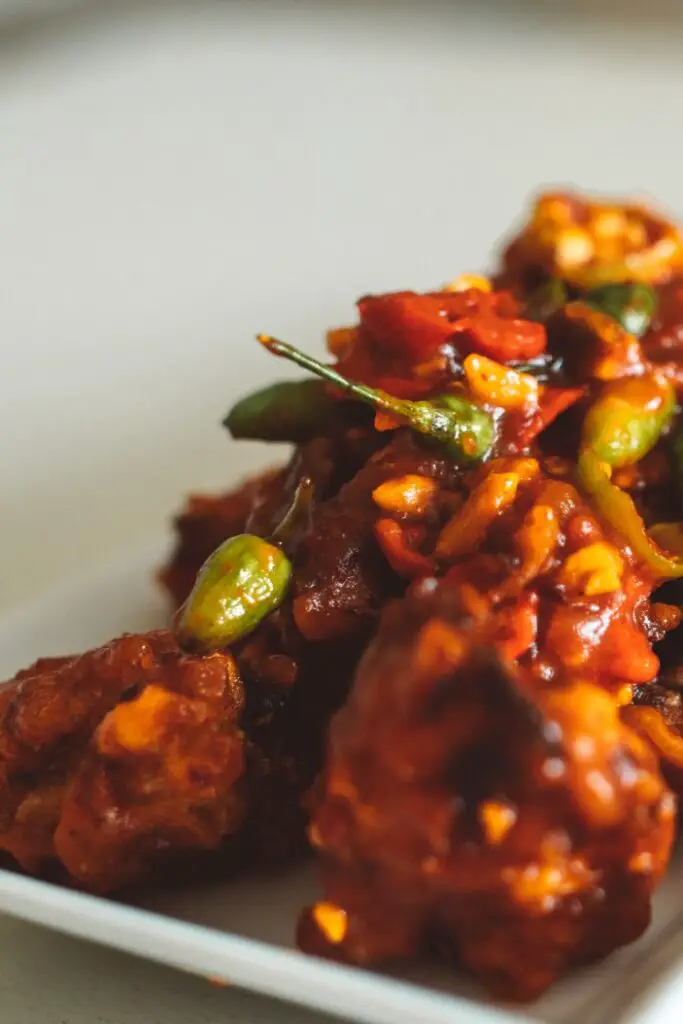
Benefits of Cooking with Chicken
Chicken is a lean, versatile protein that offers many benefits when incorporated into a healthy diet:
- Excellent source of protein to build muscle and strength1. The lean protein in chicken helps maintain bone mineral density as well.
- Provides important vitamins and minerals like B vitamins, selenium, phosphorus, and zinc.
- Can be part of a heart-healthy diet by substituting chicken for red meat higher in saturated fat.
- Lower in calories than other meats, so can aid in weight management when eating the leaner cuts.
- Easy to add to a variety of healthy recipes like salads, soups, sandwiches, etc.
- Keeps you feeling full and satisfied after eating.
When buying chicken, go for leaner cuts like breast or tenderloins. Remove skin to reduce saturated fat intake. Grill, bake, or poach chicken to keep it moist and flavorful. Overall, chicken is a nutritious protein to incorporate into a balanced diet.
Chicken for Entertaining and Feeding a Crowd
Chicken is a go-to protein when cooking for groups and events. It can feed a crowd affordably and satisfies a wide range of tastes. Here are some tips for serving chicken at your next gathering:
- Choose chicken pieces like breasts, thighs, and drumsticks that can be prepared simply. Bone-in pieces have more flavor.
- Marinate the chicken in batches beforehand for extra juiciness and taste.
- Grill, bake or roast chicken all at once for ease of cooking large quantities.
- Shred or slice cooked chicken and serve it in tacos, sandwiches, salads, and pasta dishes.
- Consider boneless, skinless breasts or tenders for easy appetizers like skewers, sliders, or chicken fingers.
- Pair chicken with crowd-pleasing sides like potatoes, rice, pasta salad, coleslaw, and cornbread.
- Offer sauces on the side like barbecue, ranch, and honey mustard for dipping and drizzling.
For even easier entertaining, opt for slow cooker or Instant Pot chicken recipes. These allow you to prep the chicken and ingredients in advance, then let it cook low and slow unattended. Shredded slow cooker chicken is perfect for sandwiches, nachos, and casseroles to serve a hungry crowd without slaving in the kitchen.
Chicken satisfies big groups effortlessly. With the right prep and recipes, you can create a feast to please any crowd.
Advanced Chicken Cooking Techniques
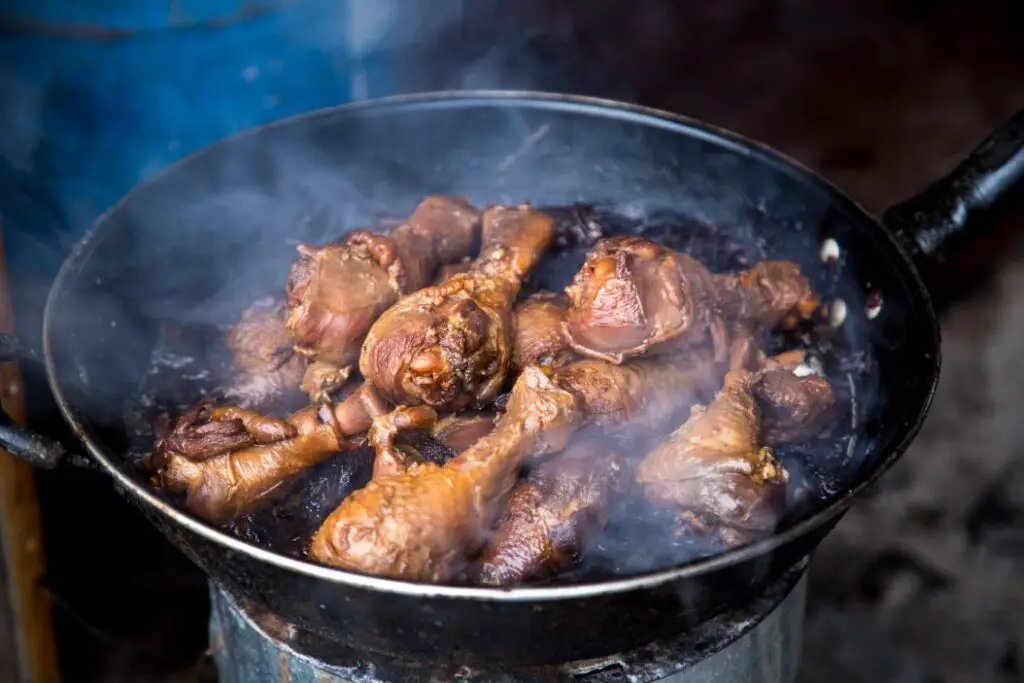
While basic methods like baking, frying, and grilling are great, there are some more advanced techniques that can take your chicken to the next level:
| Cooking Technique | Best Chicken Cuts | How it Works | Outcome |
|---|---|---|---|
| Roasting | Whole chicken or chicken quarters (leg, thigh, breast, wing) | Chicken is cooked in the oven using dry heat. The fat renders to baste the meat. | Tender, juicy meat. Crispy skin. |
| Grilling/Broiling | Bone-in chicken breasts, legs, thighs, wings | High heat is applied directly to the surface of the meat. | Searing creates a crispy exterior. Bone-in cuts stay juicier. |
| Pan Frying/Sautéing | Boneless breasts, tenders, thighs | Chicken is browned, then cooked and covered in a small amount of liquid. | Browning adds flavor. Quick cooking time. |
| Braising | Thighs, legs, wings | Uses hot air circulation to mimic deep frying. Less oil is needed. | Very tender and moist meat. |
| Stewing | Thighs, legs, wings | Simmered in liquid for a long time. | Fall-off-the-bone tender. Flavorful sauce. |
| Poaching | Boneless breasts | Gentle simmering in liquid. | Delicate, moist, and tender. |
| Deep Frying | Boneless thighs, wings, nuggets | Frying in hot oil submerges food in fat, cooking quickly. | Very crispy exterior. Moist interior. |
| Air Frying | Boneless breasts, thighs, wings, nuggets | Uses hot air circulation to mimic deep frying. Less oil needed. | Crispy, crunchy exterior. Cooks quickly. |
| Baking | Bone-in or boneless breasts, thighs | Chicken is cooked uncovered in the oven using dry heat. | Juicy, tender meat. Can crisp skin. |
| Spatchcocking | Whole chicken | Removing the backbone and flattening the chicken helps it cook faster and more evenly. | Evenly cooked, crispy skin, retains moisture. |
| Velveting | Boneless breasts, thinly sliced | Coating in egg white and cornstarch makes the chicken super tender when stir-fried. | Tender, silky texture. |
| Butterflying | Boneless breasts | Cutting chicken open like a book helps it cook evenly. | Cooks evenly. Great for grilling/roasting. |
| Brining | Whole chicken, bone-in cuts | Soaking in a saltwater solution seasons and keeps chicken moist. | Seasoned, incredibly moist meat. |
| Sous Vide | Boneless breasts, thighs | Precise temperature water bath makes chicken “fall-off-the-bone” tender. | Tender, juicy, fall-off-the-bone meat. |
| Smoking | Whole chicken, quarters | Using a smoker or wood chips infuses the chicken with a deep, smoky flavor. | Infused with bold smoky flavor. |
Mastering these techniques opens up new possibilities for juicy, flavorful chicken. Let me know if you need any tips on how to try these advanced methods at home!
Getting Creative with Chicken
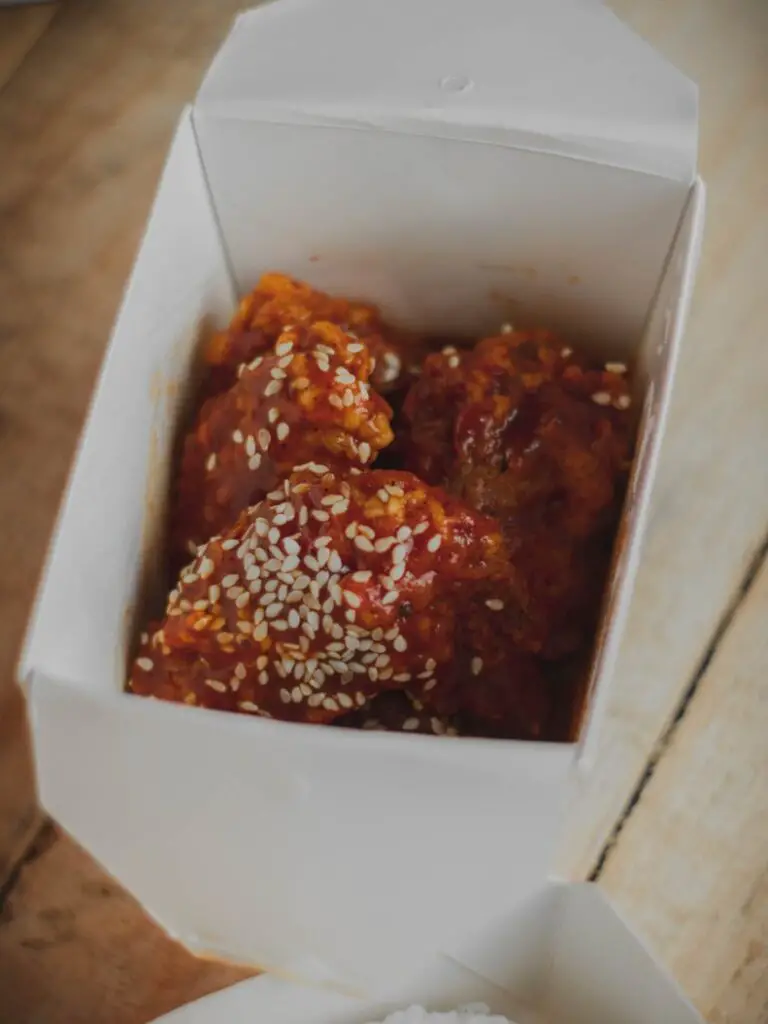
While chicken tastes great simply roasted or fried, there are endless ways to add creativity to your chicken dishes:
- Stuff chicken breasts with flavorful fillings like cheese, spinach, and artichokes, or Italian seasoned breadcrumbs.
- Pound chicken to an even thickness, then bread and pan fry for the perfect chicken cutlets. Top with fresh mozzarella and tomato sauce.
- Grill chicken skewers using unexpected flavors like pineapple, peach, or teriyaki.
- Cook chicken in a waffle maker for quick and easy chicken and waffles.
- Toss shredded rotisserie chicken with buffalo sauce and ranch for a fun twist on buffalo chicken.
- Make homemade chicken nuggets with whole wheat breadcrumbs and parmesan cheese for a crispy treat.
- Use chicken in unexpected recipes like enchiladas, pot pies, flatbread pizza, and casseroles.
The mild taste of chicken is the perfect backdrop for all kinds of innovative flavors. Let your imagination run wild in the kitchen!
Common Mistakes to Avoid When Cooking Chicken
Chicken is a versatile ingredient that can easily become dry or flavorless if not prepared properly. Here are some of the most common mistakes to avoid:
- Not brining or marinating. Soaking chicken in a saltwater brine or marinade seasons the meat and helps it retain moisture during cooking.
- Overcooking. Chicken breasts should be cooked to an internal temperature of 165°F then allowed to rest before cutting to prevent dryness.
- Skipping seasoning. Chicken needs ample seasoning. At minimum, generously season with salt and pepper before cooking.
- Rinsing raw chicken. This can spread harmful bacteria in your kitchen. Pat chicken dry instead of rinsing.
- Crowding the pan. Do not overcrowd the chicken in the pan. Cook in a single layer with space between pieces.
- Cutting into chicken too soon. Let chicken rest for at least 5 minutes before slicing to allow juices to redistribute.
- Using boneless, skinless chicken. Bone-in chicken stays juicier. Skin helps keep moisture in.
- Not letting it rest. As quoted from AllRecipes, “After your chicken breasts are done cooking, let them rest for at least half the time that you cooked them for before slicing into them.”
“The most important thing is to let the meat rest. Letting it rest allows the meat to reabsorb all the juices back into it.”
Marco Pierre White
With proper technique, chicken can be flavorful, juicy, and tender every time. Avoid these common pitfalls for better home-cooked chicken meals.
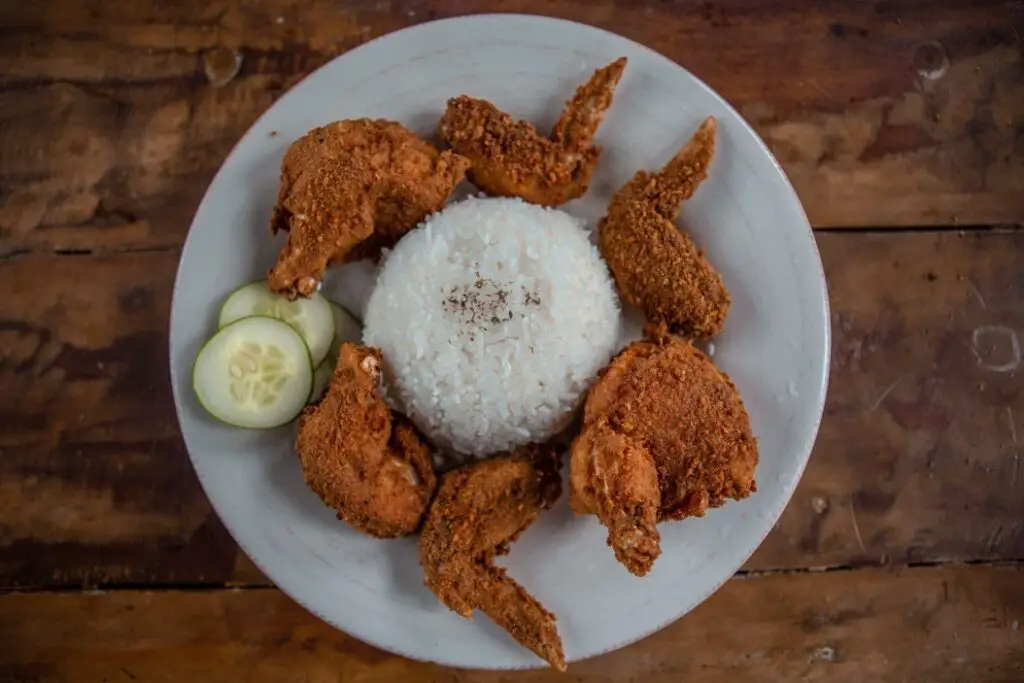
How Can Spicy Mayonnaise Enhance the Flavors of Chicken Dishes?
Spice up your chicken dishes with a variety of spicy mayonnaise options. The creamy and tangy flavors of the mayonnaise add depth and richness to the chicken, while the heat from the spice complements the savory flavors. Whether you prefer chipotle, sriracha, or harissa, there’s a spicy mayonnaise to suit your taste.
Conclusion:
Chicken is a nutritious, versatile ingredient that can be prepared in many ways. However, proper technique is required to avoid overcooking and drying out this lean protein. The cooking method chosen depends on the desired texture and flavor outcome. Roasting or grilling bone-in chicken results in juicy, flavorful meat with crispy skin. Pan-frying or sautéing is best for quick meals using boneless cuts. Slow braising or stewing makes tough cuts like thighs and legs incredibly tender.
In summary, brining, seasoning well, avoiding overcrowding, letting the chicken rest before cutting, and using bone-in skin-on chicken will result in the best home-cooked results. Allowing time for marinating and employing the proper cooking technique for the selected cut keeps the chicken juicy and enhances the flavor. With the right preparation, chicken can be the star of any healthy diet. This guide summarizes key techniques to cook moist, tender chicken every time.

